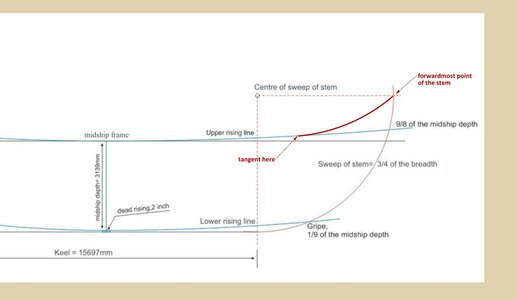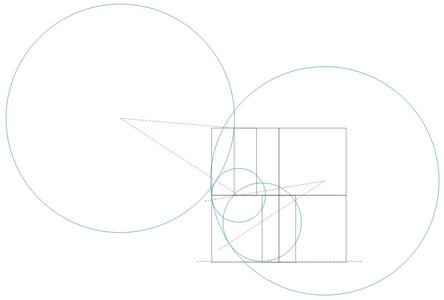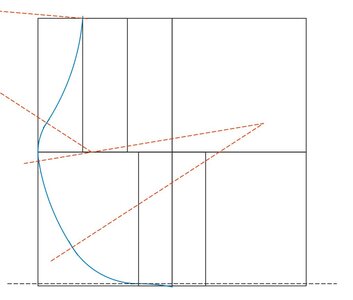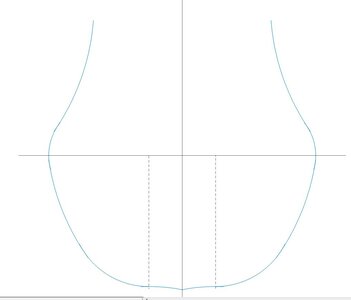You are using an out of date browser. It may not display this or other websites correctly.
You should upgrade or use an alternative browser.
You should upgrade or use an alternative browser.
.
I am sure you will be later happy with the addition of deadrise now. For the sake of clarity, I am still enclosing a sketch with a modification of the line of greatest breadth that you can make. With it you will be able to geometrically define the contours of the frames all the way to the very beginning of the stem. Otherwise you will have to create the frame contours in the bow empirically using battens, which can be a longer and rather cumbersome method in CAD. However, historically, both methods are valid, so you have a choice...

Last edited:
.
Such a run of the line of greatest breadth is already shown in many early drawings of ships, more or less realistic. A review of these drawings should suffice. Composite curves of two arcs of a circle are described mathematically in Bushnell's The compleat ship-wright of 1664. Alternatively, all this can be ignored, and later splines (or similar CAD equivalent of battens) can be used in your project.
.
- Joined
- May 13, 2019
- Messages
- 55
- Points
- 113

Now I will go into the subject of the Midships frame
The breadth of the floor is half the difference between the breadth and the depth.
The radius of the floor sweep is 7/12 of the half breadth
The radius of the breadth sweep is 2/5 of the half breadth
The reconciling sweep and the toptimber sweep can be 17/10 of the half breadth, according to Harriot.



The breadth of the floor is half the difference between the breadth and the depth.
The radius of the floor sweep is 7/12 of the half breadth
The radius of the breadth sweep is 2/5 of the half breadth
The reconciling sweep and the toptimber sweep can be 17/10 of the half breadth, according to Harriot.



Hallo @eugen.tHi All,
In this thread, I decided to try and create, step by step, the shape and construction of an English merchant ship circa 1600 - a sort of online anatomy of the ship. Why 1600? First, it is the turn of the century and the reign of the mighty Queen Elizabeth I, a time of economic boom, international expansion and English naval triumph. And second, in my view, it is also a time when the conservative period ends and a more progressive and flexible period in shipbuilding begins.
My project and future plan will be called
English merchant ship, ca. 1600.
I already have a few plans in my collection, and then I even tried to make a design of the Elizabeth Jonas, one of the biggest Tudor galleons, but realized I lacked neither experience nor knowledge. On searching for information I came across a book by Michael Oppenheim "A history of the administration of the Royal Navy and of merchant shipping in relation to the navy from 1509 to 1660", and some facts from this work interested me greatly, namely the merchant fleet, which played a major role in the rise of England and its prosperity of that period. Of particular interest to me were the tables on pages 174-175 and the document of 1582, which gives the following data: The number of ships of 100 tons or more is 177, there are also 70 ships of 80 to 100 tons and 1,383 ships of 20 to 80 tons. At this point, it should be mentioned, that so-called Levantine Company, initially gave its shareholders a profit of 300%! Which set the stage for my final decision on my next project, which will hopefully also be a springboard to a more complex project like the Elizabeth Jonas plan.
we wish you all the BEST and a HAPPY BIRTHDAY

Enjoy your special day
FROM ME TOO. GOD BLESS STAY SAFE YOU AND YOURS DON
This is the modeling that I love. Compliments








